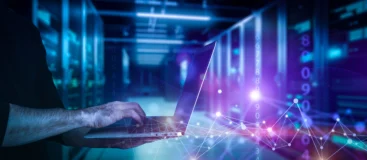What if you could avoid unnecessary software purchases, ensure compliance with licensing agreements, and optimize the use of software resources? This article shows how implementing a SAM program helps you do just that.
Understanding software asset management
A software asset management (SAM) program gives IT organizations a reliable framework—an agreed-upon methodology or set of standards—to manage and optimize the full gamut of apps installed across the enterprise at any given time. SAM programs are designed to identify and execute IT activities that span the life cycle of software applications, ranging from procurement to deployment, maintenance, utilization, all the way to disposal.
Scope and objectives of SAM
The scope of most SAM programs encompasses the basics, such as tracking/monitoring software usage and performing software license audits, via a combination of automated tools and hands-on expertise. And the key objectives of SAM align with common concerns of today’s IT organizations:
- Reduce software capital expense and operating cost
- Limit risk related to software ownership and use
- Increase IT and end-user efficiencies
SAM versus ITAM
But what makes SAM different from IT asset management (ITAM)? It’s simple, SAM is a subset of ITAM as explained below.
ITAM holistically covers all IT-owned physical assets, including software, hardware (e.g. servers, computers, network devices, and peripherals), and infrastructure.
SAM exclusively covers IT-authorized software applications and their licenses/usage.
Core Components of SAM
Software asset management has never been easier with SAM’s core components designed to address various software-related considerations. The following components are the main focus of service providers, and they can also guide in-house SAM program developers:
Software inventory management
This service offering helps you keep track of all the software installed on all the devices within your organization. Automated methods are used to accurately manage inventory details and generate reports for full transparency through a single pane of glass.
Software license management
This service offering helps you better understand the different types of software licenses, both on-premises and in the cloud. It also handles the complexity of software license agreements, ensuring compliance with those contracts so you are ready for ‘surprise’ audits.
Software deployment and maintenance
This service offering tackles the necessary tasks associated with initial software installation and ongoing maintenance (updates, patches, etc.) while optimizing software performance and security throughout the entire IT landscape—wherever employees are working.
Benefits of Effective SAM
Experienced service providers like Data Intensity have a proven track record in SAM effectiveness. As with any managed service, they provide distinct benefits over doing it yourself, particularly when customized to match your needs and fill in any gaps.
Cost savings
A primary cost-saving measure is the negotiation of better software deals with vendors. SAM experts analyze software inventories and usage metrics to prevent over-purchasing and under-utilization of assets, and make data-driven decisions about purchases, renewals, and/or reallocation.
Compliance and risk management
SAM expertise translates to risk mitigation that inhibits unauthorized software, while also avoiding penalties and legal issues regarding licensing and/or regulatory compliance. Reporting capabilities raise awareness of software being used outside the terms of its license agreement.
Operational efficiency
Software procurement and deployment are streamlined when left up to an experienced SAM team. Similarly, IT support and service delivery are enhanced by troubleshooting technical and user problems and minimizing downtime with smooth-running applications.
Challenges in Implementing SAM
Given the above benefits, there are several challenges in the corporate environment that may cause IT professionals to seek external SAM support. Such challenges include:
- Managing a complex, diverse software ecosystem
- Staying current with software updates and changes
- Obtaining accurate software usage data
- Balancing cost and compliance
Best Practices for SAM
Engaging a third-party SAM team for software implementation, execution, and maintenance gives you direct access to a set of best practices that, if followed, will successfully meet IT challenges. These best practices include, but are not limited to:
- Conduct regular software audits and assessments, using results to continually improve the SAM processes already in place and develop new ones as required to keep pace with changes
- Establish a clear SAM policy, with defined roles and responsibilities, alongside standardized processes and procedures for consistency
- Select the right SAM tools and technologies for the environment, and seamlessly integrate them into existing IT systems without business interruption
Future SAM Trends
As the IT world continues to evolve, SAM will have to adjust to the fast emerging technologies and an ever-changing threat landscape.
Impact of cloud computing
Cloud computing is already impacting SAM with increased complexity due to more distributed IT environments, the dynamic nature of apps, multiple vendors and audits, data security risks, higher probability of unauthorized software, etc. This will require a holistic and unified view of software assets across various cloud services and modernized practices for flexible resource management, robust monitoring, and advanced analytics. Traditional static methods are no longer sustainable.
Technology advancements in automation and AI
Sophisticated automated technologies, particularly AI, are on course to transform SAM by improving efficiency, accuracy, and compliance with less manual intervention. Cutting-edge tools will enable real-time software inventories, continuous scanning to detect and catalog all software assets, AI-powered license tracking and compliance checks with built-in alerts, AI algorithms to analyze usage and spending patterns, and chatbots to provide instant user solutions, to name a few.
Evolution of software licensing models
Software license models keep evolving in response to technological advancements, market demands, and changes in user behavior—calling for more resilient SAM than ever before. Licensing has steadily progressed taking us from a perpetual one-time purchasing scheme to subscription licensing with a lower upfront cost and monthly or annual fees that ensure continuous updates and support, to software-as-a-service (SaaS) hosted by a provider and accessed via the Internet, to innovative approaches such as open-source, enterprise licensing agreements, consumption-based, token-based, Freemium ‘try-before-you-buy,’ floating, network, or concurrent…and more to come.
Increasing importance of cybersecurity
SAM is crucial for maintaining an organization’s overall cybersecurity posture, ensuring that security tools are effective and software use is compliant and secure. As cybercrime threats abound in the digital era, it is increasingly important to safeguard software assets from digital attacks. Future IT organizations will not only be responsible for ensuring the confidentiality, integrity, and 24/7 availability of data to their user community; they will also have to protect a growing number of individual devices (multiple per user) that constantly access software apps on the go. This requires rigorous security systems to detect unauthorized intruders before they cause damage or extort money—preventing them from accessing, changing, or destroying sensitive business or personal information. The future will see more applications with built-in security features and enhanced security strategies for cloud environments. Taking further precautions via biometric identification, regularly backing up data, and reacting in real time with incident response plans will help battle cybersecurity attacks.
This is all part of a strong SAM program. Learn more about our SAM and License Management offerings here.
____________




